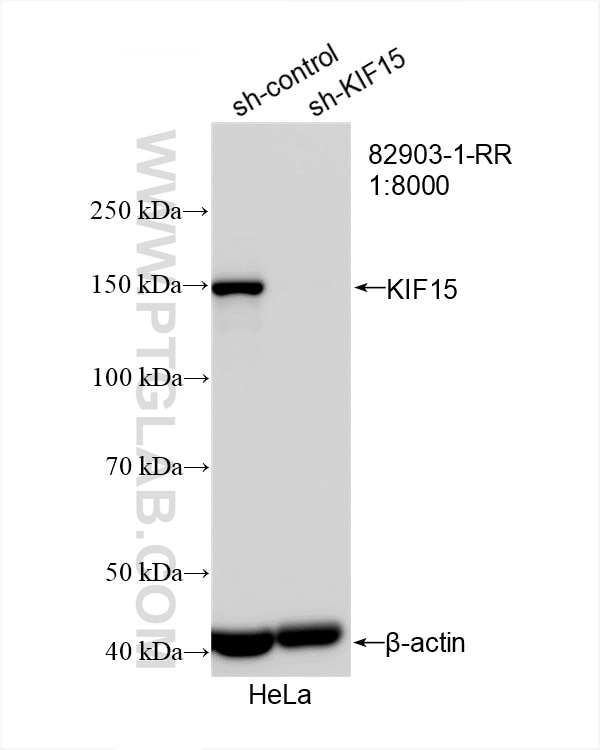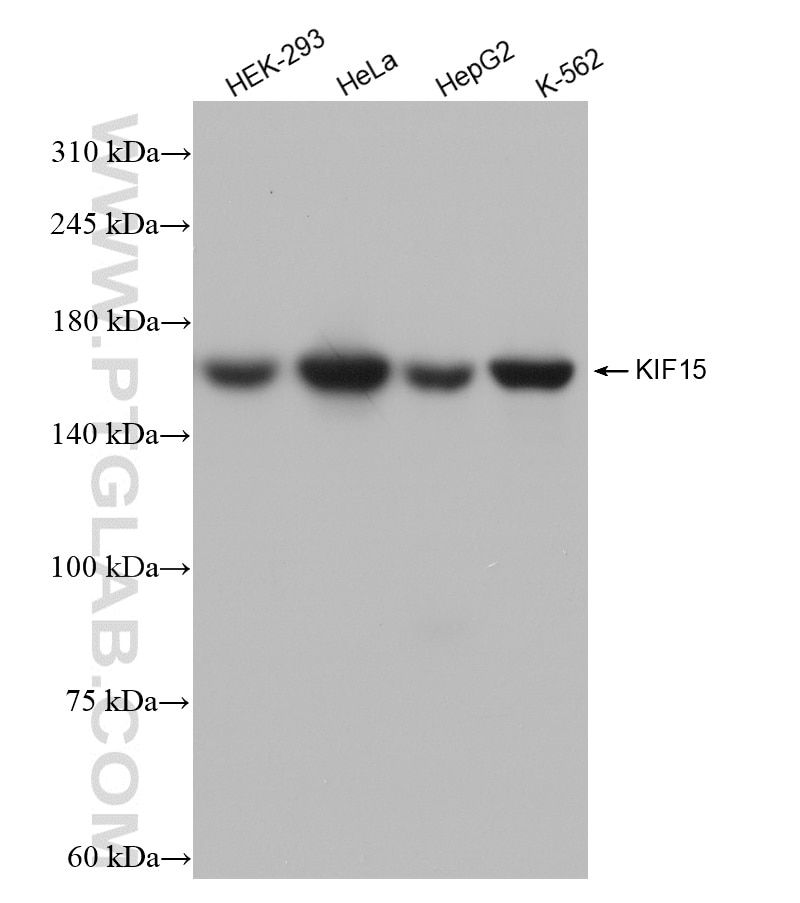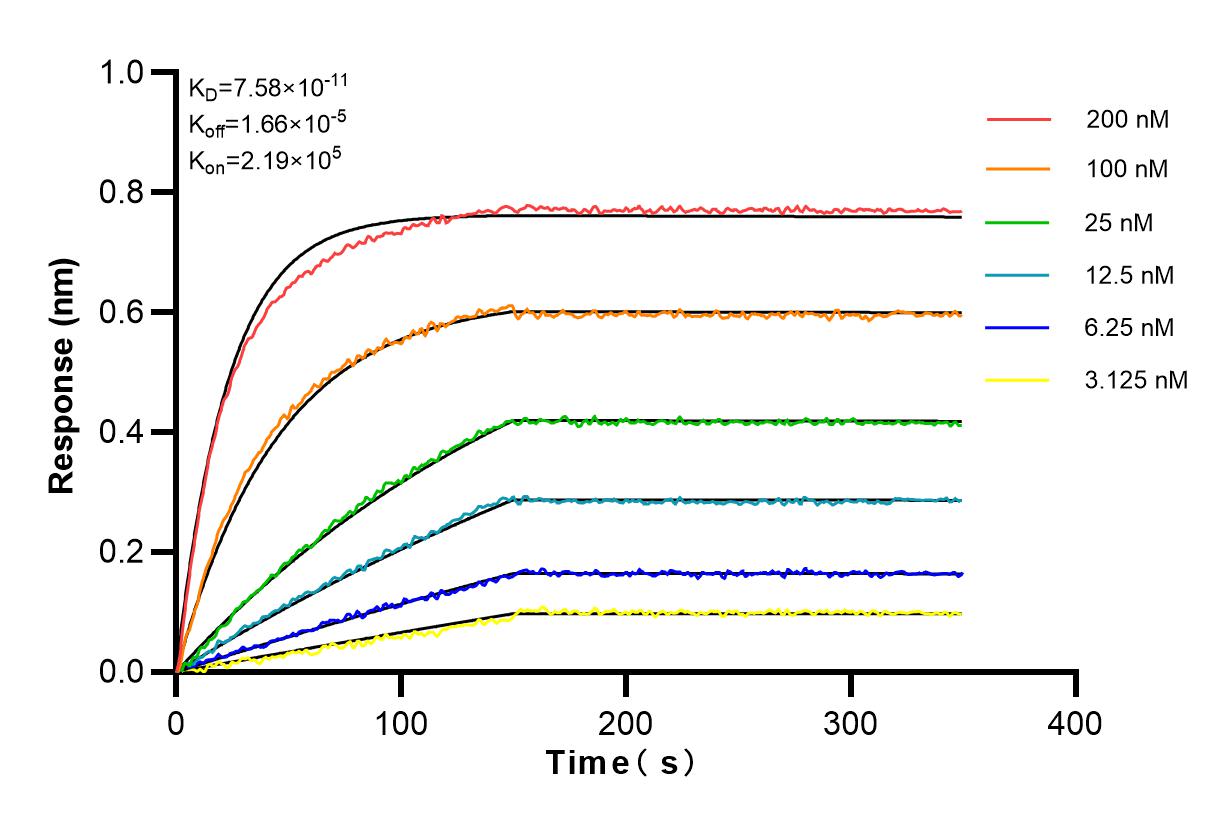- Featured Product
- KD/KO Validated
KIF15 Rekombinanter Antikörper
KIF15 Rekombinant Antikörper für WB, IHC, ELISA
Wirt / Isotyp
Kaninchen / IgG
Getestete Reaktivität
human
Anwendung
WB, IHC, ELISA
Konjugation
Unkonjugiert
CloneNo.
230049F1
Kat-Nr. : 82903-1-RR
Synonyme
Geprüfte Anwendungen
| Erfolgreiche Detektion in WB | HEK-293-Zellen, HeLa-Zellen, HepG2-Zellen, K-562-Zellen |
| Erfolgreiche Detektion in IHC | human intrahepatic cholangiocarcinoma tissue Hinweis: Antigendemaskierung mit TE-Puffer pH 9,0 empfohlen. (*) Wahlweise kann die Antigendemaskierung auch mit Citratpuffer pH 6,0 erfolgen. |
Empfohlene Verdünnung
| Anwendung | Verdünnung |
|---|---|
| Western Blot (WB) | WB : 1:2000-1:10000 |
| Immunhistochemie (IHC) | IHC : 1:50-1:500 |
| It is recommended that this reagent should be titrated in each testing system to obtain optimal results. | |
| Sample-dependent, check data in validation data gallery | |
Produktinformation
82903-1-RR bindet in WB, IHC, ELISA KIF15 und zeigt Reaktivität mit human
| Getestete Reaktivität | human |
| Wirt / Isotyp | Kaninchen / IgG |
| Klonalität | Rekombinant |
| Typ | Antikörper |
| Immunogen | KIF15 fusion protein Ag33897 |
| Vollständiger Name | kinesin family member 15 |
| Berechnetes Molekulargewicht | 160 kDa |
| Beobachtetes Molekulargewicht | 160 kDa |
| GenBank-Zugangsnummer | NM_020242 |
| Gene symbol | KIF15 |
| Gene ID (NCBI) | 56992 |
| Konjugation | Unkonjugiert |
| Form | Liquid |
| Reinigungsmethode | Protein-A-Reinigung |
| Lagerungspuffer | PBS with 0.02% sodium azide and 50% glycerol |
| Lagerungsbedingungen | Bei -20°C lagern. Nach dem Versand ein Jahr lang stabil Aliquotieren ist bei -20oC Lagerung nicht notwendig. 20ul Größen enthalten 0,1% BSA. |
Hintergrundinformationen
KIF15, also named as KLP2 and KNSL7, belongs to the kinesin-like protein family and KLP2 subfamily. It is a plus-end directed kinesin-like motor enzyme which involved in mitotic spindle assembly. Several isoforms of KIF15 exist due to the alternative splicing, with molecular weight between 130-160 kDa. Sometimes higher molecular weight around 200 kDa can also be observed, which may be a modified variant of KIF15. (14618103)
Protokolle
| PRODUKTSPEZIFISCHE PROTOKOLLE | |
|---|---|
| WB protocol for KIF15 antibody 82903-1-RR | Protokoll herunterladen |
| IHC protocol for KIF15 antibody 82903-1-RR | Protokoll herunterladenl |
| STANDARD-PROTOKOLLE | |
|---|---|
| Klicken Sie hier, um unsere Standardprotokolle anzuzeigen |






